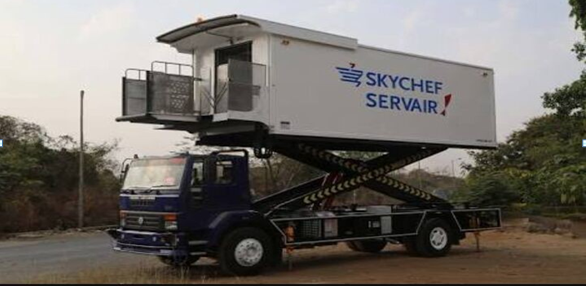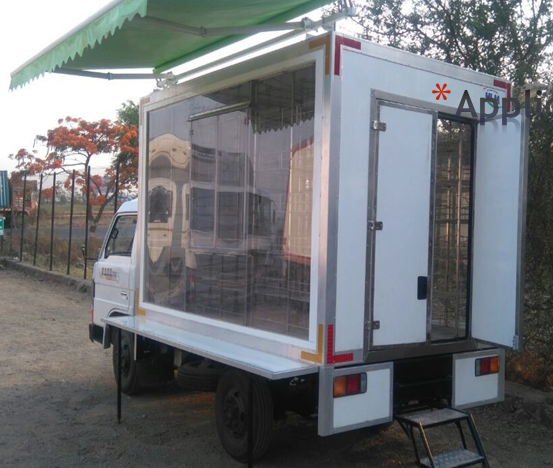HLM is a world leader in reefer vans, reefer trailers and the insulated panels industry, with operations in Holland, Turkey and India. Since 2009, HLM India Pvt. Ltd., a 50:50 joint venture between HLM Holland BV and Transport Solutions of India (TSI), has been pioneering the fabrication of reefer containers in the Indian market and setting new standards along the way. Mr. Siddharth Mishra, CEO & Director, HLM India Pvt. Ltd, talks about developments in the cold chain sector.
Excerpts:
Please tell us about your product program, production facilities and related details.
HLM’s is the first and only non-corrosive container ever introduced in the market. Ours is a vacuum press panel production process which was the first in the country. We were the first to bring a full new panel in the market. We can make 120 boxes in a month. We have imported the knowhow from Europe for the same. We started with 50 boxes in 2012 and last year we crossed 500 boxes which is a 10 fold increase in 5 years. Now we have other imitators coming in and known stalwarts (whom we have dethroned) trying to replicate our boxes.
The salient features of our containers are: GRP / XPS panels, non-corrosive, light-weight, heat reflective, highest volume in same size, water resistant, and fire resistant.
Recent progress and changes made in the last two years have been in the areas of:
- 30 odd design changes to make the container better in the area of flooring / doors / front wall / profiles / rear portal / sub frame
- We have started making DOMEX / GRP containers
- First company to make moving rear curtains
- First company to make movable solid partition
- First company to make double decker reefer
- First Company to make a 40’ GRP container
Share the sales, infrastructure and production related details.
We made 500 + reefer boxes in 2016/17. We have a capacity of 120 boxes per month in two shifts / so around 1500 boxes per annum. Our factory is on a 1.25 acre shed in Pune. We also have assembly nodes in Delhi / Chennai / Ankleshwar / Bangalore / Hyderabad. We have different CNC cutting machines / vacuum presses / A panel cutting CNC machine (only company in India to have the same)/ Air compressors – the best set of machinery in a reefer factory in India by a distance. Our QC test includes 168 points in the areas of design / structural / strength / leakage / temperature / weight / corrosion. Worker strength varies from 48 – 110 depending upon order book. Staff strength is around 35.
Take us thro’ your body building process.
We use the following processes for body building: preparation of raw materials, manufacturing of panels, preparation of panels, assembling of box, mounting and despatch. We use different materials such as GRP, XPS, plywood, aluminium and stainless steel. The refrigeration units we use are from Carrier, ThermoKing and HwaSung Thermo. Our biggest USPs are the materials we use and our design know-how.
Tell us about your co-operation with OEMs.
OEMs are aggregators in this field. The reefer vehicle has three components – chassis / box / unit – each one has its own expertise so as far as technical side is concerned there is not much extra that they can provide. However their advantage is reach. They have dealers all over the country so they have better volumes. That is where they will be instrumental.
OEMs will always be big daddies and dictate the business. They will always rule the roost and we must all toe the line. We are already subcontractors for most OEMs both for Indian business as well as their exports.
Brief us Reefer market structure & developments after BS-IV & GST implementation.
The reefer vehicle market size is around 2000 per year and should grow to around 5000 per year in 5 years. We have made a 40’ trailer reefer box and done successful trials in the country. We are the only ones to have this distinction.
Share your views on demand for reefer vehicles in the coming years.
The business will definitely pick up and the business will grow. Hub and Spoke model is the only one that will work in the long run. There will be 3 distinct types :
- Large one for more than 1500km transport – 24 / 28 and 32’
- Medium ones for milk and pharma and 350-1000km – 18/20/22’
- Local distribution – 8/10/14’
Comment on technology impact and international trends to follow in the segment.
Lighter vehicles with better insulation are the need of the day. GRP container introduced by us 7 years ago is becoming the most widely adopted boxes. They give the customer a chance to earn more by staying within the norms. 5 years down the line we see the containers becoming more standardised. The future container will develop depending upon the following factors:
- road conditions
- Chassis development specially the suspension
- Manpower and training
- Quality control measures set by incoming MNCs
- The respect given to container by the handling people.
The main focus areas should be making a container which takes care of the product and not just ticks the boxes. What we mean is that today the reefer boxes are made by size and insulation thickness primarily. A reefer box is much more than that. It should look into the right materials / proper antifungal and antibacterial quality / whether the inner materials give a wrong reading on temperature (e.g – SS absorbs cold temperature better than the air and the AC sensors are on the SS wall so the AC cut off happens based on SS wall temperature and not necessarily the ambient air temperature while in GRP , the air gets colder first so the cut off happens on air achieving the temperature and not the wall surface )/ non corrosive material like SS / things that the reefer box hides like water leakages as PUFF containers absorb water etc.
What are the growth drivers for cold chain transport & specifically the reefer vehicles?
Main growth driver in Cold chain transport has to be the right preservation of material and the fact that wastage is nullified. Today wastage is calculated into the cost of the product but we refuse to spend on proper cold chain. This is sad. So many materials that we are transported in cold chain abroad are done in normal trucks here. The Govt. should play a bigger part in this. They should regulate which material needs what kind of transport so that wastage is minimised. Further, most food businesses are localised and one chains start growing, this will change and people will start to invest in preservation. Finally, international companies should adhere to international norms so that things will change.

